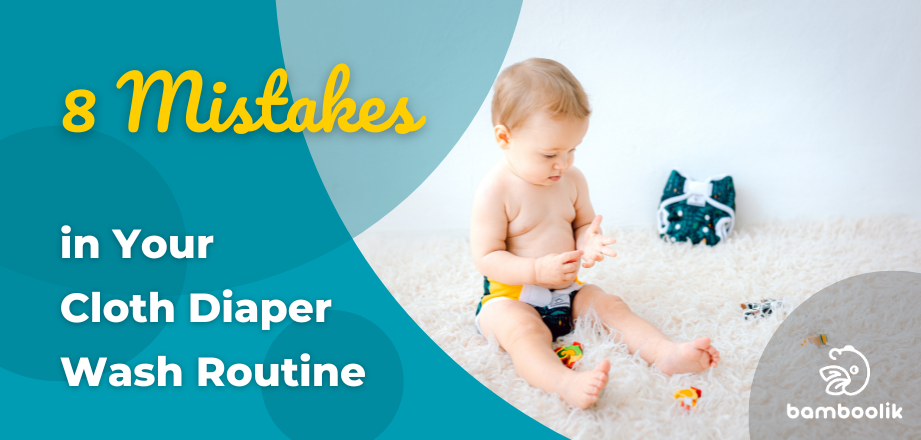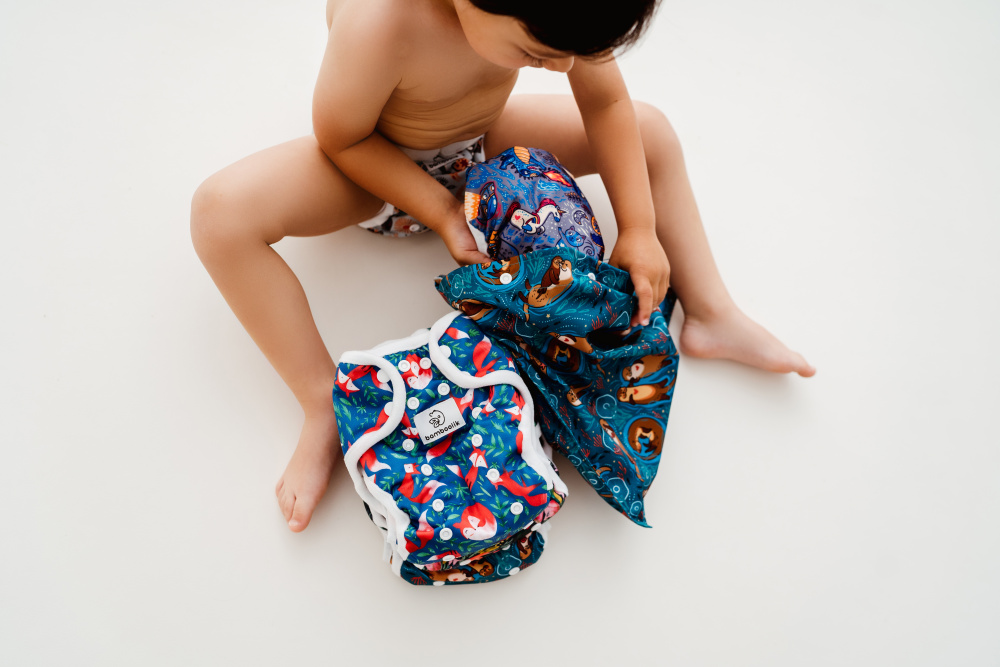
What is the best way to approach washing reusable diapers? You want to avoid these 8 common mistakes. Let’s go through them one by one and help you develop the best wash routine for cloth diapers.
1. Adding Water in Your Diaper Pail
A has-been. Something our grandmothers used to do when they washed diapers by hand — at that time, diapers were pre-soaked to prevent stains. With modern cloth diapers and modern washing machines, putting soiled diapers in water belongs to the past. Watery base is a feast for bacteria that thrive in warm and wet environment. Never soak dirty diapers - just get rid of bits of stool and put them in your diaper pail.
| OUR TIP: If you want to make this dirty diapers job less dirty, line your diaper pail with a large laundry bag. When it’s full, simply throw it in the washing machine as it is, in the bag. This way, you don’t have to touch the diapers at all. Just don’t forget to leave the bag open (don’t close it) so that dirty diapers get out of the bag during washing. |
2. Washing Machine Too Full
Don’t stuff your washing machine up to the brim with dirty diapers. If there isn’t enough space, diapers won’t get thoroughly washed and rinsed. Washing machine producers always state the recommended weight of laundry load for their washing machine - respect that, they know what they’re doing. If your diapers don’t get washed well, they might irritate your baby’s skin (diaper rash coming your direction).
3. Not Enough Water in the Washing Machine
This is a common problem, often caused by the previous mistake (too many diapers in the washing machine) or by some too eco-friendly washing programmes that use water sparingly. The problem is the same as we described in Art. 2: diapers don’t get washed or rinsed thoroughly. Diapers with detergent residue can irritate sensitive baby skin.
How to be sure that your washing machine uses enough water? If you can, look at diapers circling around during washing. Can you see water? Good. Do you see just diapers and foam, no water splashing around? Time to add more. Also, add water in case you don’t see into your washing machine and diapers come out of it weirdly stiff and smelling of detergent too intensely. Most washing machines do have the “add water” function.
4. Washing Cloth Diapers Too Late
Wash your cloth diapers every third day at the very latest. Bacteria left unattended for more than three days will have such a party in your diapers that it will be difficult to stop them. Trust us, we’ve seen diapers that were literally eaten.

5. Washing Temperature Is Too Low
Wash cloth diapers at 60°C. Never less. Modern cloth diapers don’t need higher temperatures. 60°C is the temperature that kills even the E.coli bacteria (that live in the gut).
| OUR TIP: Stay away from cloth diapers with recommended wash temperature of only 40°C. This indicates low quality of the diapers - the producer cannot guarantee that the fabric withstands hundreds of repeated washing cycles. Washing cloth diapers at 60°C is crucial to avoid skin irritations and infections. |
6. Too Much Washing Powder / Detergent
More detergent doesn’t mean more washed! It usually means diapers that aren’t well rinsed, aka reusable diapers with some detergent residue. Again, not a good thing for sensitive baby skin. Follow the dosing instructions on your detergent of choice.
7. Tumble-Drying Cloth Diapers with PUL or Drying Them on a Direct Source of Heat
PUL is laminated polyester that ensures your reusable diapers are waterproof. PUL is present on Diaper Covers or Pocket Diapers. PUL should not be tumble-dried or dried on a direct source of heat (usually a room heating but also be careful with direct strong summer sun). Drying your PUL cloth diapers like this shortens their longevity. Always air-dry your PUL diapers on the rack or outside in the shade.
8. Using Soap-Based Detergent and/or Fabric Softeners
Don’t use soap and fabric softeners on cloth diapers. They clog them, making them sort of waterproof when they should be actually absorbing. Clogged cloth diapers start leaking on the edges - most often, your baby would be wet around the legs but when you take the diaper off, the inner insert would be just slightly wet, not soaked.
That said, gall soap deserves an honorary exception - feel free to use gall soap, it won’t clog your diapers (except for the fleece parts). It’s the most perfect stain remover.
| OUR TIP: If you happen to have clogged cloth diapers, strip them. The best way is to soak them in water with added citric acid or with sodium percarbonate. How to strip cloth diapers? Find all the answers in our article How to Wash Cloth Diapers. |
